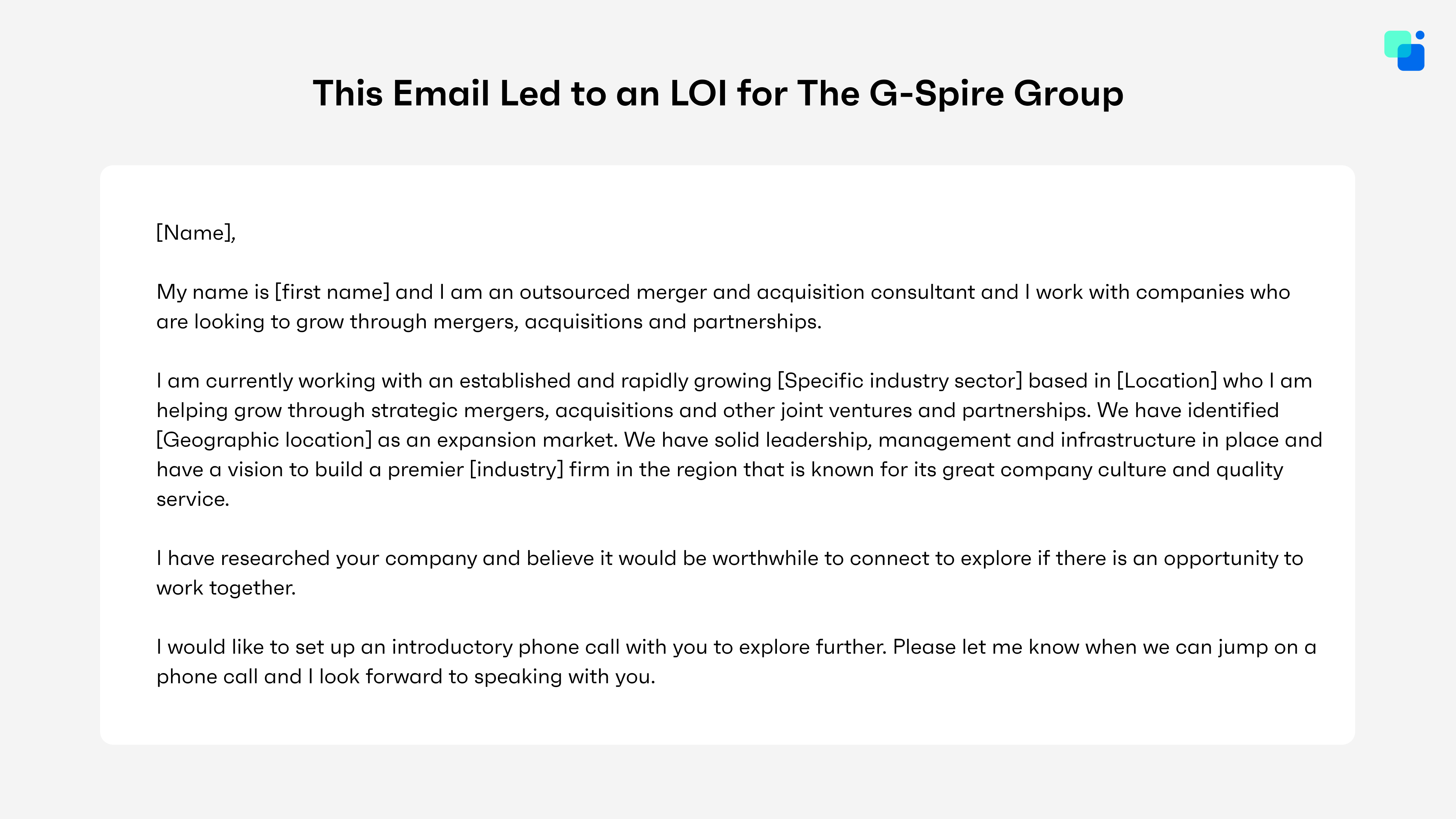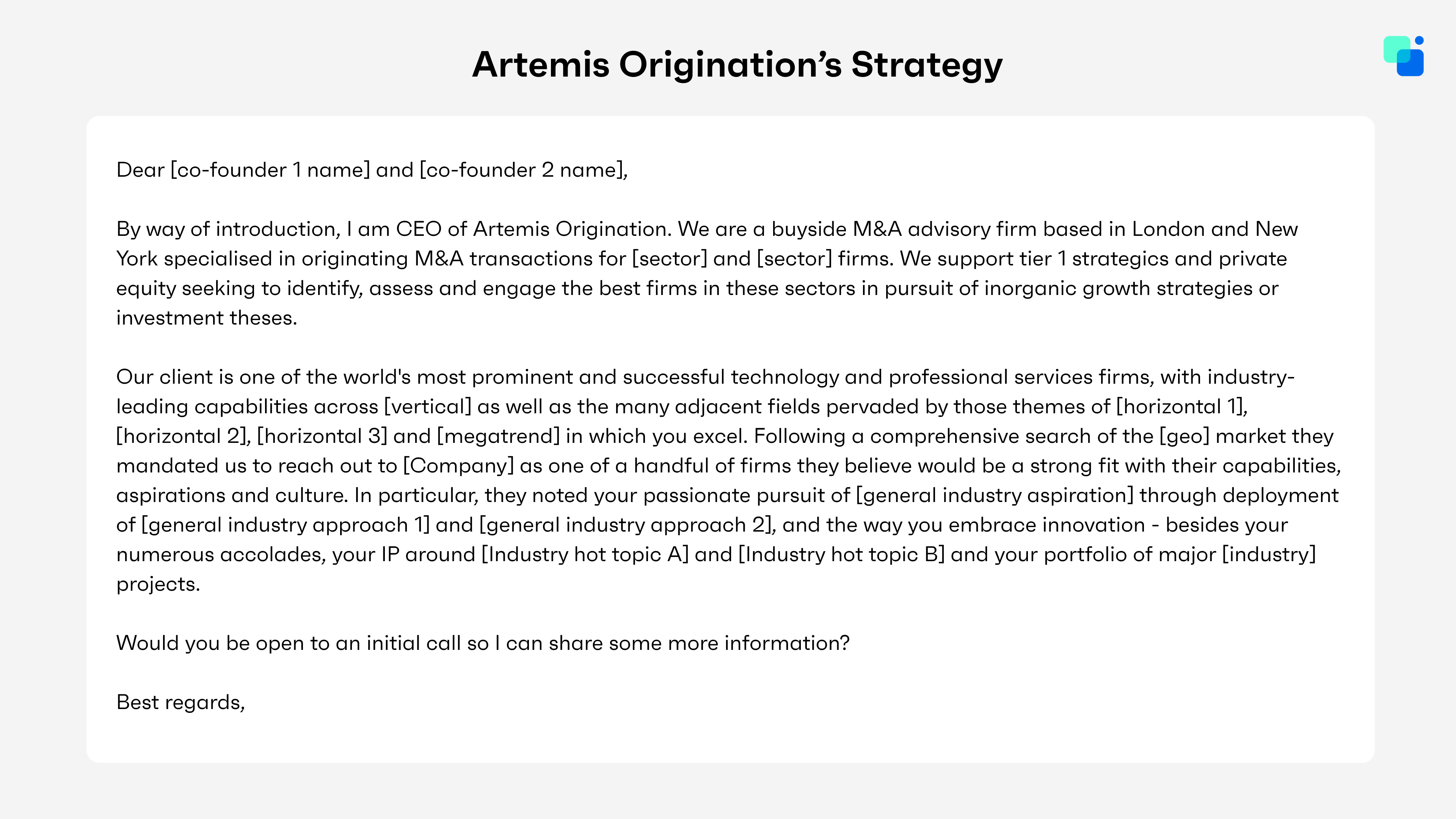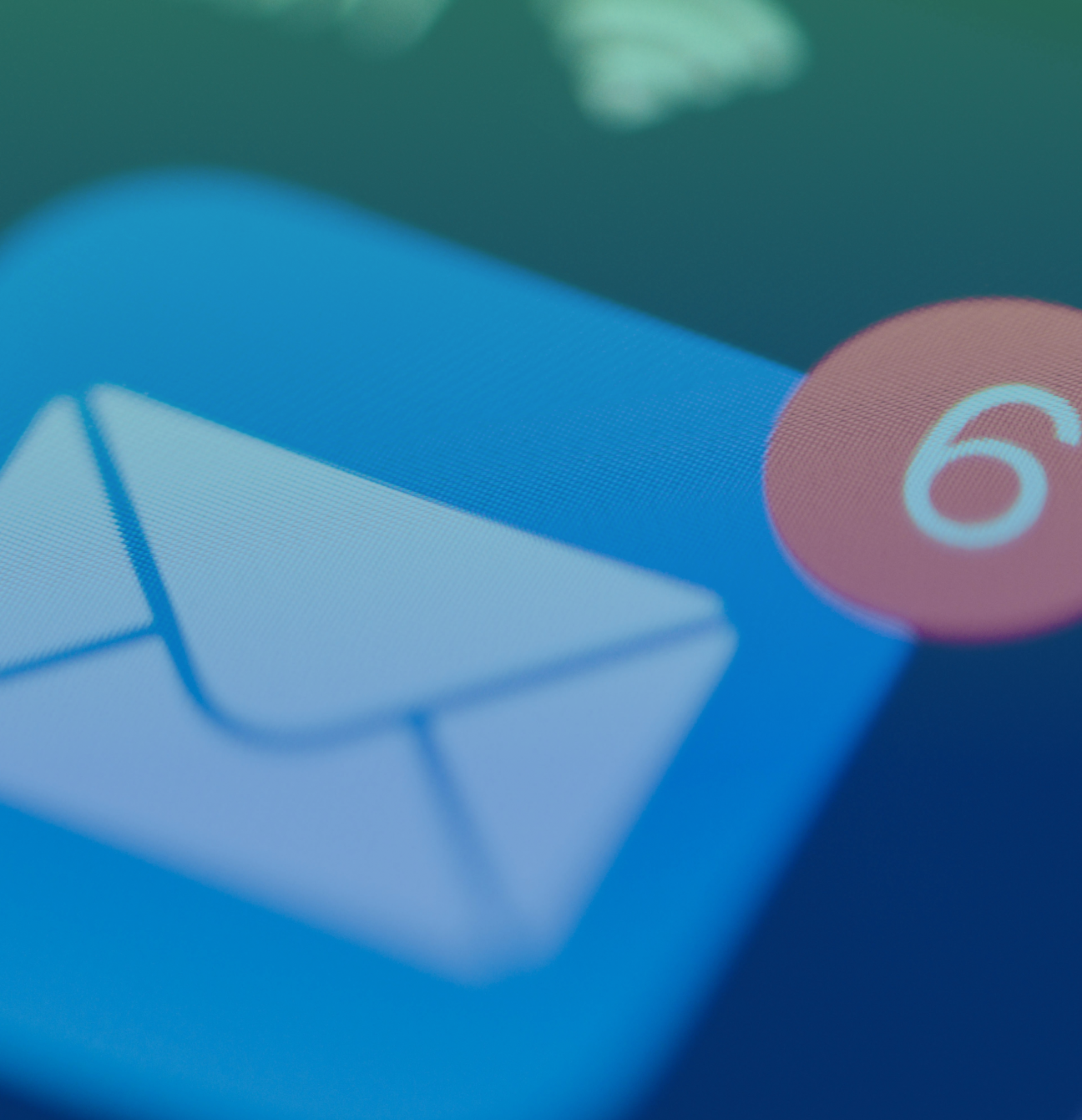Direct outbound sourcing means sending a lot of cold emails.
How do you, as an entry-level Business Development (BD) analyst, write emails to executives that not only get opened, but get responses?
Effective outbound emails are essential for sourcing deals and making a strong impression. So, let's take a look at the components that make up a great sourcing email, as well as some examples of real emails in action.
Here’s what you need to know about sourcing email templates.
The Email Components
Subject Lines: Grab Attention
Subject lines play a crucial role. It's simple: capturing the recipient's attention increases open rates.
There are generic best practices to follow regardless of the email's content, like keeping the subject line length to 9 words and 60 characters and avoiding spam words (Free," "$$," and "billion" just to name a few). But there are some M&A-specific guidelines to ensure a busy CEO clicks on your email.
Keep your subject line focused on the value your email is providing or the call to action. Are you able to introduce them to the CEO of one of your port cos? Lead with that. Are you looking for a meeting? Lead with that. Don't make the CEO guess the intention of your email.
Sample Subject Lines:
- "Investor Intro"
- "Meeting with [firm name]?"
- "Series X interest?"
- "Meeting at [event]?"
Openers: Engage and Connect
To capture the executive's attention, your opener should be direct, engaging, and purposeful. Avoid meaningless phrases and focus on these approaches:
- Trigger-based Opener: Connect a recent development in the company to the potential for M&A opportunities. For example, acknowledge their recent funding round and express interest in their future rounds.
- Commonality Opener: Do some digging to find shared experiences or connections that can create an immediate bond.
- Credibility Opener: Showcase your firm's authority and expertise in the industry. Highlight past transactions and market research.
The Ask: Be Clear and Concise
Keep your ask short and make it easy for the CEO to respond. Avoid making them search for the call to action (CTA). Here are some examples:
- "Let’s meet virtually for 30 minutes to discuss if this is a good fit."
- "Let’s hop on a 15-minute call to discuss a partnership."
- "Can we talk next week more about ways that [Firm Name] and [Company Name] could work together?"
Real Emails from Real Dealmakers
A great M&A email knows its value proposition and its audience.
Your value proposition should anticipate and answer objections while highlighting your unique selling points. Consider these key areas:
- High Evaluations: If you can confidently offer more than anyone else, highlight your fund size or explain what you find valuable about the company.
- Market Expertise: Demonstrate your knowledge with proprietary market insights and trends that inform your firm's investment thesis. Mention key features you're looking for in an investment that align with your target's profile.
- M&A Experience: While your personal reputation is still growing as an entry-level analyst, leverage your firm's distinction and showcase a snapshot of your firm's M&A process. Include a quote from a CEO about your process to reinforce credibility.

Cold Outbound Email to Founders
According to Ryan Goral, founder of G-Spire Group, “This email was based off a template. I did the research and reached out. Every word you send doesn’t have to be perfect, it just has to come across as personal and genuine.”
Here is his acquisition email example.
[cg_copy_to_clipboard_start="email-1"]
My name is [first name] and I am an outsourced merger and acquisition consultant and I work with companies who are looking to grow through mergers, acquisitions, and partnerships.
I am currently working with an established and rapidly growing [Specific industry sector] based in [Location] who I am helping grow through strategic mergers, acquisitions, and other joint ventures and partnerships. We have identified [Geographic location] as an expansion market. We have solid leadership, management and infrastructure in place and have a vision to build a premier [industry] firm in the region that is known for its great company culture and quality service.
I have researched your company and believe it would be worthwhile to connect to explore if there is an opportunity to work together. I would like to set up an introductory phone call with you to explore further. Please let me know when we can jump on a phone call and I look forward to speaking with you.
[cg_copy_to_clipboard_end="email-1"]

Artemis Origination’s founder and CEO, Paul Dondos, shared the sourcing email template below.
[cg_copy_to_clipboard_start="email-2"]Dear [co-founder 1 name] and [co-founder 2 name],
By way of introduction, I am CEO of Artemis Origination. We are a buyside M&A advisory firm based in London and New York specialised in originating M&A transactions for [sector] and [sector] firms. We support tier 1 strategics and private equity seeking to identify, assess and engage the best firms in these sectors in pursuit of inorganic growth strategies or investment theses.
Our client is one of the world's most prominent and successful technology and professional services firms, with industry-leading capabilities across [vertical] as well as the many adjacent fields pervaded by those themes of [horizontal 1], [horizontal 2], [horizontal 3] and [megatrend] in which you excel. Following a comprehensive search of the [geo] market they mandated us to reach out to [Company] as one of a handful of firms they believe would be a strong fit with their capabilities, aspirations and culture. In particular, they noted your passionate pursuit of [general industry aspiration] through deployment of [general industry approach 1] and [general industry approach 2], and the way you embrace innovation - besides your numerous accolades, your IP around [Industry hot topic A] and [Industry hot topic B] and your portfolio of major [industry] projects.
Would you be open to an initial call so I can share some more information?
[cg_copy_to_clipboard_end="email-2"]
After their initial meeting, the CEO told Dondos the reason he responded to this email: "I get so many emails like this. But your email was the first to show that you really understand the value of my company."
That’s the goal.

Depending on your firm and timeline, you may want to wait for a reply anywhere from 2-3 days to 1-2 weeks before reaching out again.
Here are two follow-up email examples to use in your next cold outreach.
Follow-Up Email Template #1
[cg_copy_to_clipboard_start="email-3"]
Dear [Co-founder 1] and [Co-founder 2],
I wanted to follow up on my note from last week regarding a potential collaboration between [Company] and our client — one of the world’s leading [industry] firms.
Given your leadership in [industry] and the impressive work you’ve done around [Industry hot topic A/B], we’re very interested in exploring whether there might be strategic alignment.
Are you open to a short introductory call to discuss further?
Looking forward to your thoughts.
[cg_copy_to_clipboard_end="email-3"]
Follow-Up Email Template #2
[cg_copy_to_clipboard_start="email-4"]
Dear [Name],
I hope you’re doing well. I’m following up on my earlier email about our client — a rapidly growing [industry] company expanding into [Geographic location].
Given [Company]’s reputation for [specific strength or niche if you know it], I’d love the opportunity to introduce our client and explore whether there’s scope for partnership, acquisition, or another way to work together.
Would you be open to a quick call in the next week or so?
[cg_copy_to_clipboard_end="email-4"]
Sending 2-3 follow-up emails is the most optimal strategy. The first follow-up email tends to be the most effective, boasting 40% higher reply rates than the initial email.
The Necessary Ingredients for a Great Outbound Email
How do you recreate their success? Here are the components you'll need.
- Credibility or Commonality Opener - How do you grab their attention?
- Value Add - What value can you offer them?
- Personal/Firm Introduction - Who are you?
- Ask - How do you want them to respond?
Demonstrating credibility or offering valuable connections is much harder for a junior BD early in their career.
What does a "Credibility Opener" or a "Value Add" look like for entry level BD analysts who are still building their M&A credibility?
"I've had the experience of having someone reasonably young who was extremely effective. It was a mixture of knowing a handful of the buzzwords, but it was courtesy and humility that really worked. You know, if you're a founder and you're receiving stuff, you'll see who it is that’s writing to you, and you'll see that they're young. You won't be thinking that this person's gonna write the check -- [CEOs] understand how it works. But, there are points at which it's appreciated, the courtesy and understanding, and having taken the effort to really get to know them. And I've seen it work many, many times." - Paul Dondos, CEO and founder of Artemis Origination.
See More Email Examples
Crafting strong outbound emails is a vital skill for entry-level BD analysts.
By focusing on attention-grabbing subject lines, engaging openers, clear asks, and compelling value propositions, you can increase your chances of sourcing deals and building meaningful connections.
For more email examples, download our full guide, How to Send Outbound Emails that CEOs will Actually Read.













